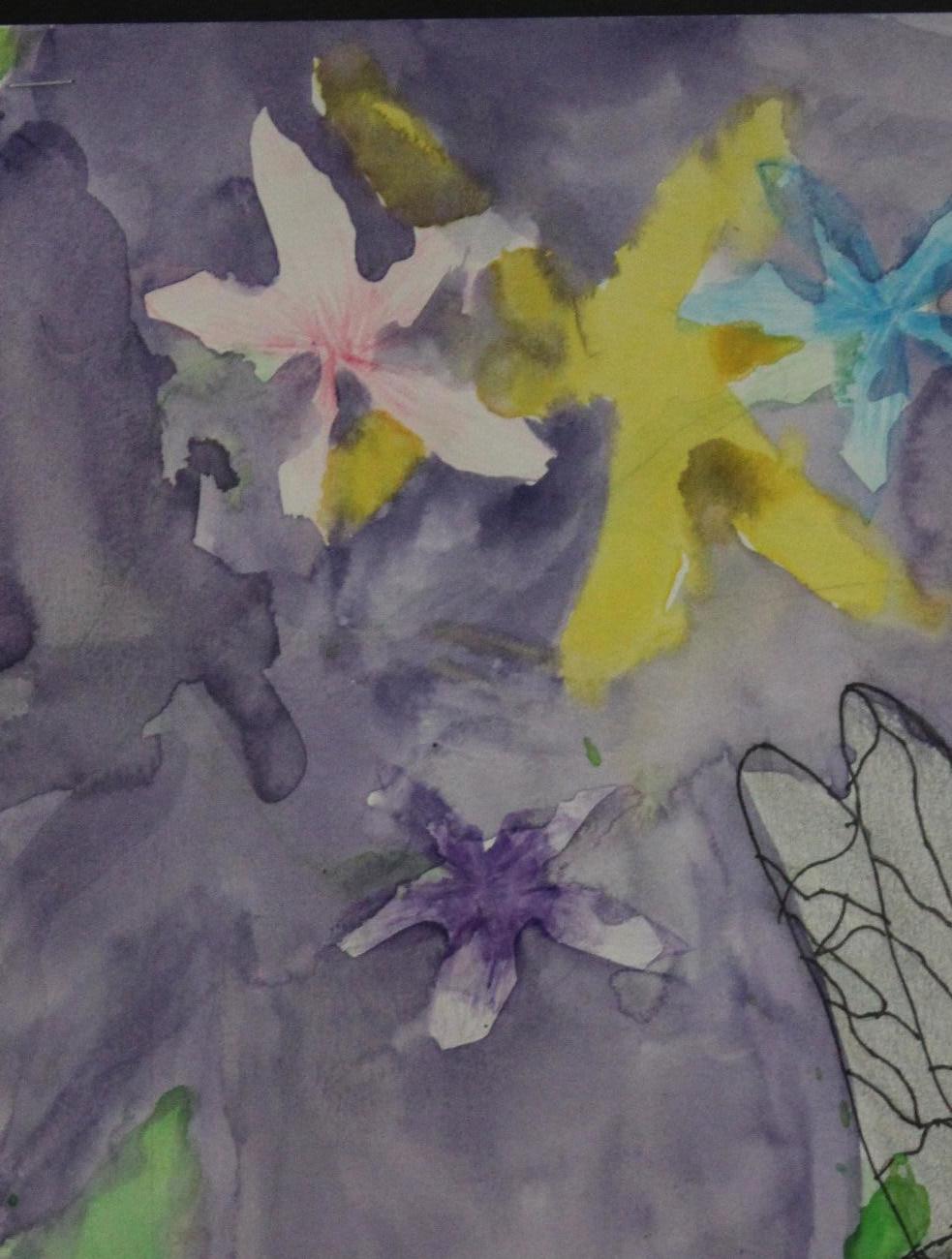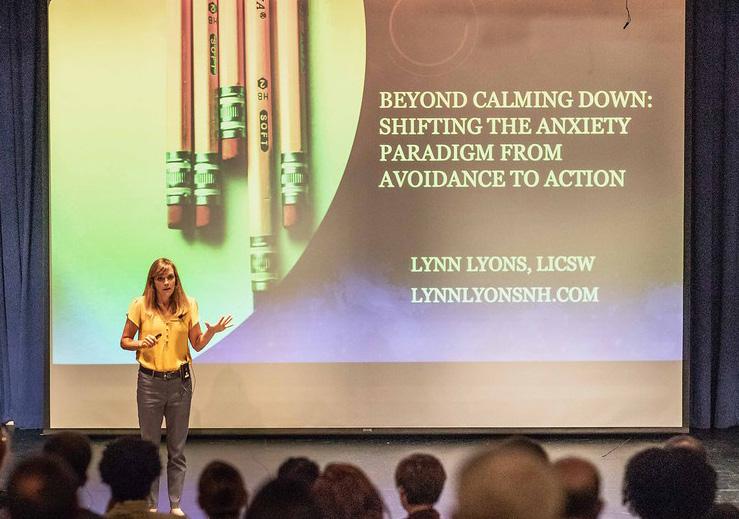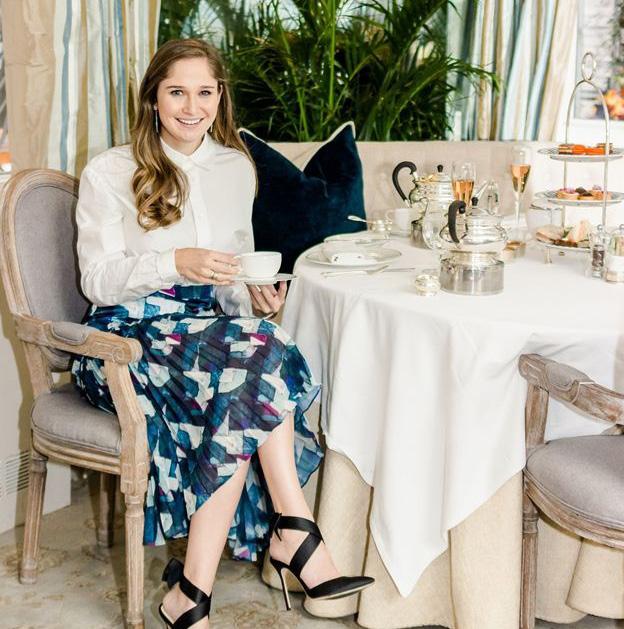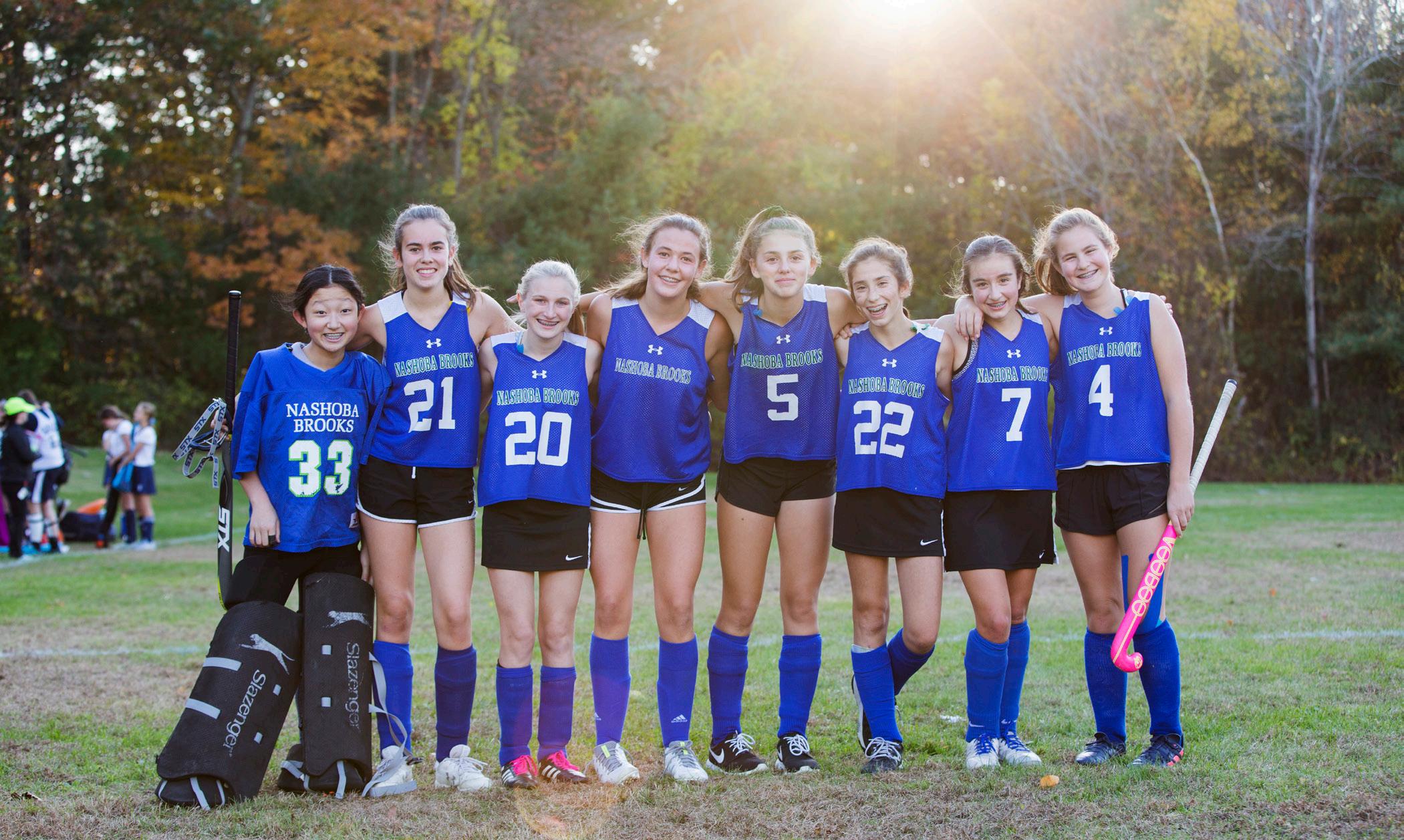
8 minute read
The Pursuit of Personal Excellence Striving for Growth, Not Perfection
THE PURSUIT OF PERSONAL EXCELLENCE
STRIVING FOR GROWTH, NOT PERFECTION
by Jacqueline Waters
IN ENOUGH AS SHE IS, author Rachel Simmons devotes an entire chapter to ‘The Cult of Effortless Perfection.’ “At the very schools where discipline and achievement are everything, students are increasingly expected to appear as if they’re not really trying,” writes Simmons, who explains that in today’s world, “trying too hard codes as a sign that you are uncool, even incompetent.” It is no wonder that student anxiety, stress, and depression continue to rise as young people attempt to meet often unattainable expectations, all while trying to make it look easy.
At Nashoba Brooks School, we aim to steer clear of a ‘cult of effortless perfection.’ Hard work, effort, and persistence are admirable, and recognizing our imperfections is invaluable. In our School community, we celebrate genuine effort and wrong answers because we want students to take risks and make mistakes. We know that doing so is critical to the continuous process of learning, which involves setbacks and builds resilience. Learning is not effortless, and we are not perfect. All of us— students, teachers, parents—improve by making mistakes and problemsolving. Each of us is a work in progress. Together, we value the pursuit of



personal excellence and debunk the myth of perfection.
“Excellence and perfection are not the same,” explains Head of School Danielle Heard. “If you focus on perfection, you either get it or you don’t. Perfection is a fixed mindset. If you focus on creative problem solving, you are more likely to persist and build more skills. Excellence is a continuous pursuit. Given the pace of change in our world today, there has never been a more important time to be flexible and creative, with our thinking, and to respond to adversity with resilience.”
Fueled by this idea of personal excellence in their pursuits, Nashoba Brooks students seek creative solutions to complex challenges. In math classes, they are routinely asked to find more than one way to solve a problem. In English classes, their first draft of an essay is certainly not their last. And in the School’s new Shilling STEAM Lab, students learn that the products they design and build do not often work in their first iteration. Teachers expect that students will need to tweak, revise, and improve their work.
“We try to model the importance of process,” explains Instructional Technology Fellow Rachel Parker. “We say, ‘Let’s look at why it didn’t work and use that to move forward.’” In the Stop-Motion Lego Club, Parker works with some of the School’s youngest students, Kindergarten through Grade 2, as they learn to accept that their creations do not always turn out the way they’d imagined them. “At the beginning of the year, they were frustrated. Every single child dropped their LEGO project on the floor and melted down when it broke. They had to put it back together. This continued to happen every class, but they only cried that first day. The projects didn’t stop breaking; the students just accepted that it would happen and learned they could rebuild it. They had the resources, knowledge, and resilience to carry on. The process was great for developing selfregulation skills,” said Parker.
When students face setbacks and don’t succeed at first, they learn to try again. They learn to look at what did not work in order to improve. “My mind tells me what to create. If something goes wrong, I will fix it and then keep moving forward," says Mingus, a student in Grade 3. She says she has to overcome challenges, problem-solve, and use her imagination. “When I try something new, it gets easier and easier...with practice. I like to try something new everyday. I love testing and trying new things. And in the STEAM Lab, I can do that."
Another student, Keira in Grade 5, is equally enthusiastic: “In the STEAM Lab, I learned I can be creative,” she exclaims. “When I grow up, I want to be a coder!” Miller, in Grade 1, explains how he’s learned to be flexible: “One time, I was trying to build a house, but I couldn’t because I couldn’t find the right materials,” he shares. “Sometimes in the STEAM Lab, I have to change my idea. The STEAM Lab helps me problemsolve.”
This process of problem-solving is continuous, and the process— as teachers at Nashoba Brooks are quick to point out—is more important than the product. They recognize that it is important
to normalize process and help students understand that they can, and should, revise. Parker often says to students: “You have to be done working on this because we don’t have any more time, but that doesn’t mean it’s finished. Nothing is ever done, it’s just ready to share.”
All over the School, we see examples of works in progress. Ongoing student work is displayed not only in the STEAM Lab, but in the hallways throughout the School. Art teachers often hang paintings in progress on the bulletin boards outside of their classrooms, and anyone passing by Tucker Auditorium can hear musical pieces in development as students practice, compose, and improvise. “We love to show the struggle, not just the end result,” remarks Dina DeMayo, piano teacher. DeMayo notes that at the School’s Open House, the play is always introduced as “a work in progress.”
By celebrating process, and encouraging students to take risks and share works still in progress, Nashoba Brooks is creating a culture where students acknowledge that learning is not effortless; it’s hard work. Teachers here encourage students to keep going, to be okay with struggle, to persevere because the process builds

resilience. Students need to know they are capable and have teachers who believe in them.
When Assistant Head of Lower School Tim Croft recently popped into a Kindergarten class to observe group learning, he heard the teacher say, “Kiss your brains!” As Croft notes, “You have to love the way you think to be able to persevere through struggle.” Everyday, children take risks in a group setting; they offer up responses that may be right, but may also be wrong.
Mistakes are a part of any good process, so modeling problem-solving and teaching students to look for ways to learn from their mistakes is crucial to building confident children who love the way they think. As Croft explains, one challenge is creating a paradigm shift in how we view excellence. He advocates for “empowering students to embrace the essence of yet” and acknowledges the struggle that’s inherent in learning. “Our job in creating community is not boxing in any student and allowing for all of the exploration, embracing the skill of forgiveness, and forgiving oneself.” Rather than wallowing in a mistake, students need to ask What did I learn from this to move forward?

Hank Bryant, director of educational technology and innovation, advocates for modeling one’s own mistakes and works in progress as an educator. “That’s something we do well here: modeling and celebrating mistakes!” notes School Counselor Liz Joyce.
Reflecting on a recent workshop with Rachel Simmons, Danielle Heard notes, “It is so easy for middle school girls to focus on unattainable perfection...Individuals can create a different persona in social media—a perfectly curated, selective identity free of and far from the imperfections of reality. These images can cause girls to believe that everyone else is perfect.” Middle School mathematics teacher Sarah Thomsen adds,“Middle school girls hold themselves to high standards...Simmons spoke with students and parents about personal growth— your own journey versus comparing yourself to your peers,” a message that resonated with everyone in the audience. At Nashoba Brooks, we are making a conscious effort to honor mistakes and value effort, as we help students strive for personal excellence. “Students are taught that they are valued. They can be themselves. They don’t have to fit into a box. They can be multidimensional,” DeMayo says,“I tell students to work hard; that’s the quality you need in any profession: a work ethic. Hard work here is celebrated. Growth mindset and enthusiasm is what keeps the students working hard.”
“Technology, science, and engineering are not neat or linear. They’re messy,” Parker adds. “Creation is not linear. It’s a continuous cycle.” The same can be said of our pursuit of personal excellence. It’s not linear. At times, it can be messy. And it most certainly is continuous. Having embraced challenges and taken healthy risks, our students will be confident to seek creative solutions to future problems. And they will know they can because they are enough.
Summer Leadership Academy Grades 4-7
Through creatively designed group and individual activities, students will learn and develop leadership skills in this program. Activities include public speaking exercises, navigation, canoeing, and design projects.

Physical education teacher Ryan Wonsor will be leading the Summer Leadership Academy and is looking forward to two exciting weeks of learning and fun.
Week One: June 15-19 Week Two: June 22-26
Get Ready for Summer! Open to current and newly enrolled students for the 2020 school year.
To learn more, email Kerry Stevens at kstevens@nashobabrooks.org.
Summer Bound Grades PS-3

During this two-week program, children will be guided through exciting outdoor and fun-filled activities from water play and art to music and coding.
Former teacher Lizzie Baird will be leading the Summer Bound program and is excited for another fun-filled summer!








